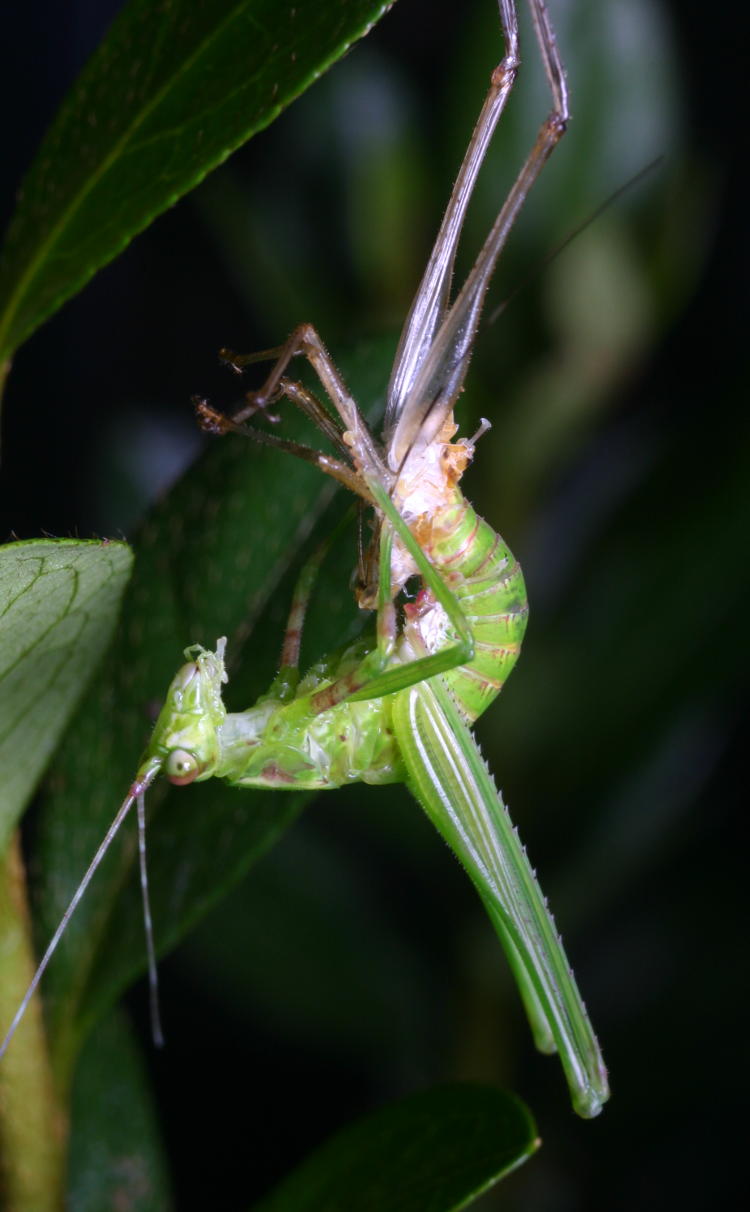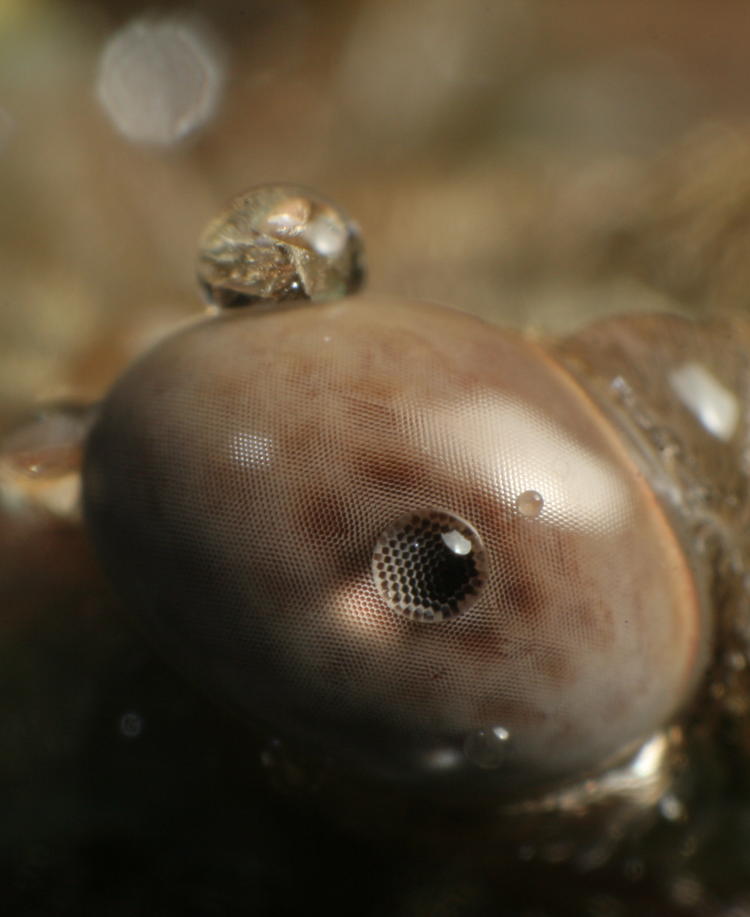
Much earlier in the year, I was noticing (and commented on, I believe) how the weather was showing distinct variability for the same date, but now, going through the archives is only reinforcing how sweltering it is at this time of year. I mean, I wasn’t expecting snow in July or anything, but with many of them I can remember how I felt while I was out shooting, and in most cases it was, “sweating profusely,” even though it was late at night; I don’t need reminders of that.
In 2013, I happened across what I believe is a juvenile katydid molting, probably first or second instar. Instar is how entomologists refer to life stages, wherein we might use years, but most arthropods go through their entire life cycle from spring to fall; spiders and cicadas are notable exceptions. There is no fixed number of instars, since it is a period between molts, and some arthropods continue to molt as reproducing adults while others die off soon after reproducing, so their adult form is considered their final instar. And it occurs to me, as prolific as katydids are around here, that I have too few photos of them in different stages – basically this, and adult form. This is partially because they lay eggs within leaves, between the upper and lower layers of a single leaf, so spotting the eggs or the hatching takes careful examination. I believe I’ve seen the adults laying once or twice, but I’m not sure I have photos of it. If I do, and it occurred on a date that falls on a Wednesday this year, you may see them later on – katydids have a fairly broad range of dates for adult phase, and we’re already hearing them sounding off at night, even though the one pictured here is weeks from that phase.

We jump ahead (a ha ha ha ha ha! Oh, my, such sophisticated humor!) to 2016 now, alongside the backyard pond that is almost always occupied by green frogs (Lithobates clamitans.) You recall how I ragged on biologists about naming everything on this coast, “eastern?” Well, this isn’t a lot better, and shouldn’t be confused with a green treefrog, which at the very least has green as its primary color while this one does not. Granted, the name probably comes from long before the Linnaean taxonomic system and was simply adopted from the most common monikers at the time, but then again, they had no problem renaming the green anole into the Carolina anole recently, even though the Linnaean/scientific name had not changed, so…
Anyway, we’re just here for the eye detail. But notice the round catchlight, from the flash diffuser/softbox, and the single spot from the flashlight that I was using to find this guy – the only way I was only going to get this close was late at night.
Not done with the eyes yet.

In 2018, I had photographed the entire sequence of a cicada molting into final instar, but that was two years ago yesterday. Then it rained immediately afterward, and I went out once it stopped and did some detail pics of the new adult. Then after unloading the memory card and noticing how the raindrop acted on the eye facets, I went out again to do it better. By this time it had passed midnight and was now the 22nd, so it counts. I posted this then, a few days later (because editing those photos and then writing it all up took some time,) but I like this particular crop a little better. And to close, another from that same session, also posted then.

I mentioned then that I would make a big print out of this, and I did; it was even showcased in the public show that I had late that year, now resides on the staircase gallery here at Walkabout Studios, and serves as my phone background. And it’s a composite, or if you prefer, a stacked photo: the depth-of-field at this magnification (the entire juvenile frog is the size of your fingernail) is so short that focus is sharp on very specific areas, so I joined two frames to broaden the focus range. Physically, it wasn’t possible to do this in-camera; any lens can only stop down so far, and even before reaching the minimum f-stop, diffraction starts to affect the image. But in this case, it was with the reversed 28-105 which has a fixed f16 anyway.
I know what you’re saying: you’re saying the focus range isn’t that great even with the stacking. [No, you’ve probably given up already and are texting your friends.] But yes, it was even shorter than this before, and while this is abject cheating, something a real photographer would never resort to, I’m not getting paid for this anyway, so I’m pleasing myself. Go get your own photos.



















































